Rosherville Power Station
INTRODUCTION
Mr Bernard Price, in 1925, the then chief engineer of the Victoria Falls Power Company stated that electric energy is the “life-blood of the mining industry.” The Rosherville Power Station is an example of this statement. It was built in 1911 by the Rand Mines Power Supply Company (RMPS), which was a subsidiary of the Victoria Falls and Transvaal Power Company Limited (VFP), to supply the gold mines of the Witwatersrand with electricity and compressed air. This was at a time when South Africa’s mining industry was increasing in size rapidly and the only way for it to maintain that growth was for it to use electricity. Both VFP and RMPS would supply power under separate licences granted by the government in terms of the Transvaal Power Act of 1910.
The Rosherville Power Station was built halfway between Johannesburg and Germiston on the banks of the Rosherville Dam, in an area called Cleveland. In a life span of fifty-five years, from 1911 to 1966, it did not only produce electricity and compressed air for the mines, but also became a thriving and closely knit community.
THE EARLY YEARS
VFP, on the security of mortgage bonds, financed the construction of the Rosherville Power Station. At the time of its construction Henry William Montaque Paulet, the Sixteenth Marquees of Winchester, the Premier Marquis of England was the chairman of VFP. Major Walter Lewis Bagot was the general manager in South Africa and Bernard Price was the chief engineer. Major Bagot, who was an officer in the British Army, was also the first compound manager and manager of the Central Workshop that was also built at around the same time as the power station at Rosherville.
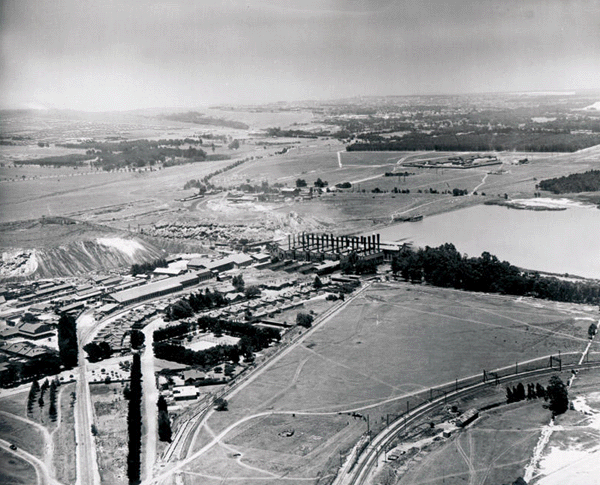
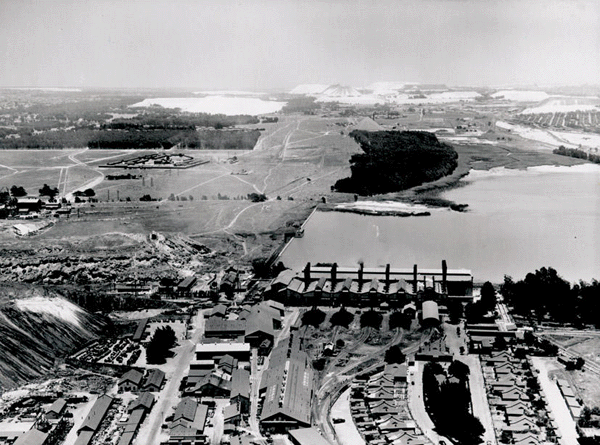
Site of Rosherville generating station
It was constructed beside the Rosherville Dam, which was originally built by Nourse Mines (part of the Rand Mines Group) in 1905. It was necessary for power stations to be built near an ample supply of water, as it was needed to cool the condensing circulating water by natural evaporation. The dam contained, when it was full approximately 820 million gallons (3690 million litres) and had a surface area of 215 acres, which was adequate for the needs of the power station. The construction began in 1909 and ended in 1911, when it was able to deliver electricity and compressed air to the 17 mines of the Rand Mines and the Corner House Group. At the time, it was the only Air Central Station for the reticulation of compressed air in bulk to mines.
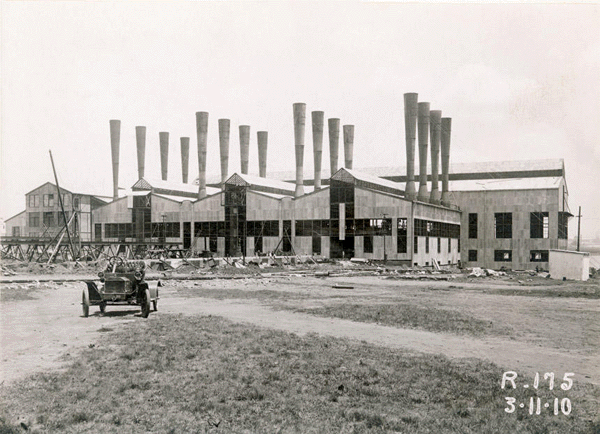
The total capacity of the station was 60,5 MW for electricity generation, it comprised five at 9.6 MW turbo alternators, and one at 12.5 MW for compressed air generation, comprising six 3 000 kW steam driven air compressors operating at 100 lbs. per square inch. It was also connected to the 40 000-volt transmission system, which was already in place between the Simmerpan Station, Brakpan Station, and the system that linked with the West Rand. An improvement that occurred with the construction of the Rosherville Power Station was instead of having 10 000-volt overhead lines, as at Simmerpan and Brakpan, Rosherville was designed for 20 000-volt underground cables. This was because the mines in the area were next to the semi built-up southern residential areas of Johannesburg.
In 1912, Rosherville would be connected up to the Robinson Air Distribution Station, which had just installed six 3 000 kilowatt electrically driven rotary air compressors, to form the only compressed air grid in the world. Canada Compressor Station, which was located nearby Consolidated Main Reef mine, also fed into this compressed air grid. During the First World War the output of this grid would increase with the installation of three 7 000 kilowatt turbine compressors at Rosherville. Brown Boveri Co. supplied these and they were the largest of their kind in the world
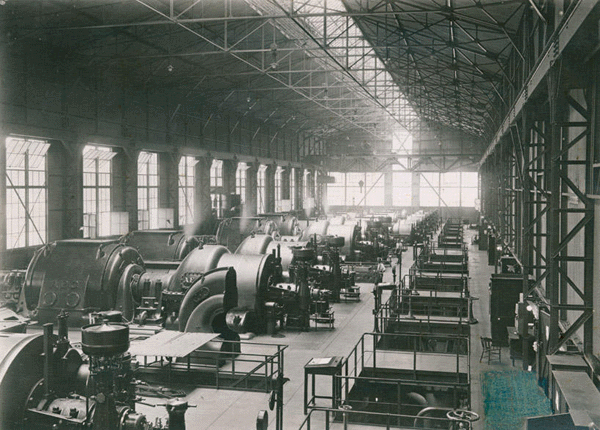
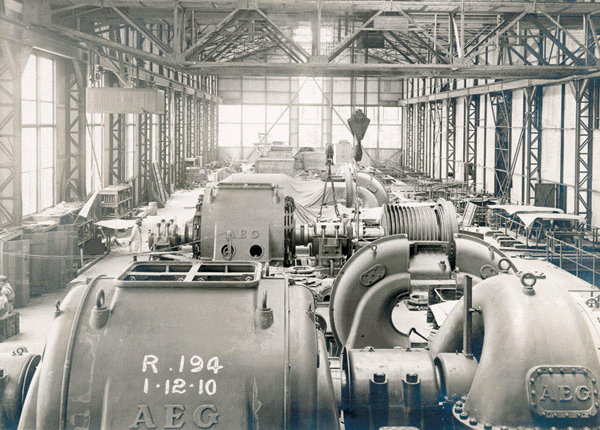
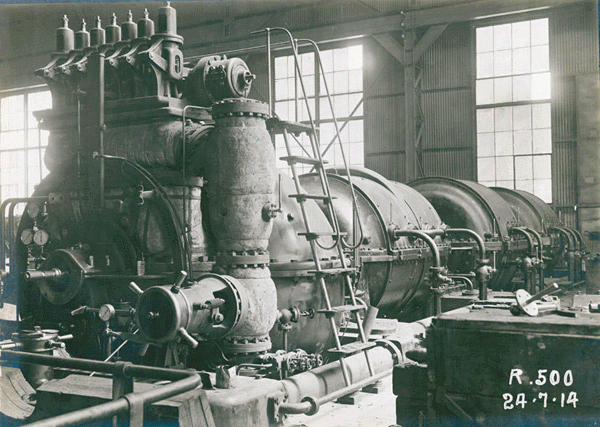
Turbine hall
TEETHING PROBLEMS
It is important for a power station to maintain the supply of electricity to its customers. In Rosherville’s case, it was even more important, as it was supplying electricity to the mines whom at any given time had many people underground and any interruption could lead to the death of many people. Many of the early problems that effected the power station were linked to the high frequency of lightning storms on the Witwatersrand in summer. Many modifications had to be made to the equipment to counteract the lightning.
The original 12 000 kW generators installed at Rosherville were of standard design, and it was not appreciated how the exceptionally heavy fault values placed on them by lightning effected the general system. The stators had to be specially braced to prevent distortion and breakdown. Redesigning and reinforcing of the stators had to take place within the first year of Rosherville being in service.
There were also problems with the switchgear as it could not break the heavy fault currents imposed by the lightning. This would often lead to oil fires that lead to the VFP creating fire brigades at each of power stations, including Rosherville.
The vulnerability of the overhead pin insulated lines to lightning was another problem, as they were often damaged leaving the circuit unusable. This was corrected with the development of the “damage proof” line. It involved a high speed sensitive relay protection switching and automatic reswitching which limited the destructive power arc of the lightning to a minimum.
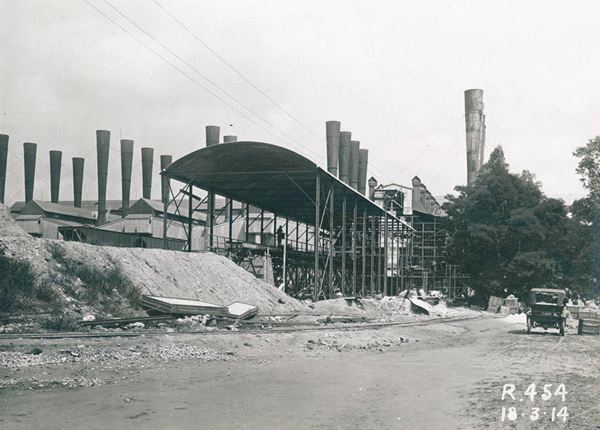
MOVING FORWARD
In the years that followed the establishment of the Rosherville Power Station, the advantage of using electricity was evident to the consumers due to its cheapness, convenience, and reliability. Thus, the demand increased which led, in the period 1913 to 1914, to further extensions undertaken.
During the First World War Rosherville had to carry on with a depleted staff. Spare parts for the machinery of the VFP and RMPS power stations could not be obtained because of the war. They therefore had to be made at the Central Workshop that was at Rosherville.
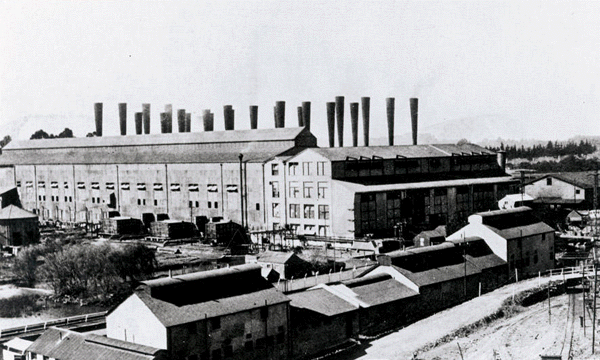
Later, during the Second World War, these workshops would be used for the manufacture of weaponry. It was also a period where the rapid growth of the mining industry of the previous years slowed due to the high running costs, this lead to some of the mines closing down. The future was looking bleak for the power stations of the VFP and RMPS, it was feared that the mining industry had reached its maximum potential and the power requirements of the Witwatersrand mines would diminish.
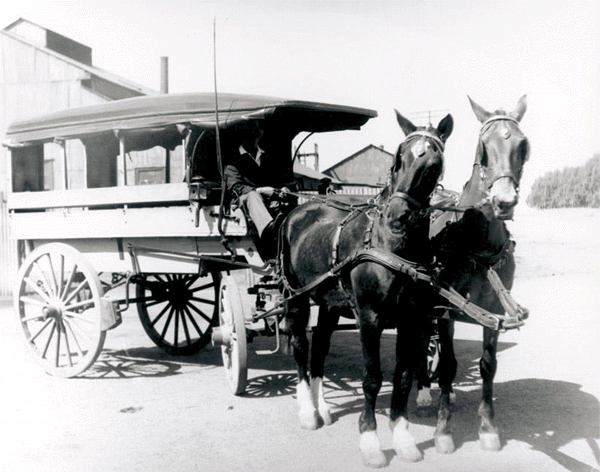
This would change in 1922 as the mines efficiency increased and costs decreased after the Rand Revolt was quelled. By the early 1920s, the Rosherville Power Station was the largest steam-generating station in the British Empire.
1923 saw the end of the arrangement created in 1908 between VFP and the Rand Mines and Corner House Group that saw the RMPS power stations, Rosherville and Vereeniging, and the VFP power stations, Brakpan and Simmerpan, serving separate mines. It now formed a combined system that was far more reliable and cheaper. It was now one of the world’s major electricity networks. The system was controlled from the control office at VFP’s Simmerpan Power Station. The VFP and RMPS now became one organisation from an operational point of view, although in most other purposes it was one organisation all along.
In September 1925, members of the Senate and Houses of Assembly of the Union of South Africa visited the Rosherville Power Station. They were shown around the station and then at a luncheon they were addressed by Bernard Price, who was still the Chief Engineer of VFP, who spoke on the benefits of electricity to the mines and the need for the government to help the industry and not hinder it. Replying on behalf of the guests was the Minister of Mines, Mr. F.W Beyers.
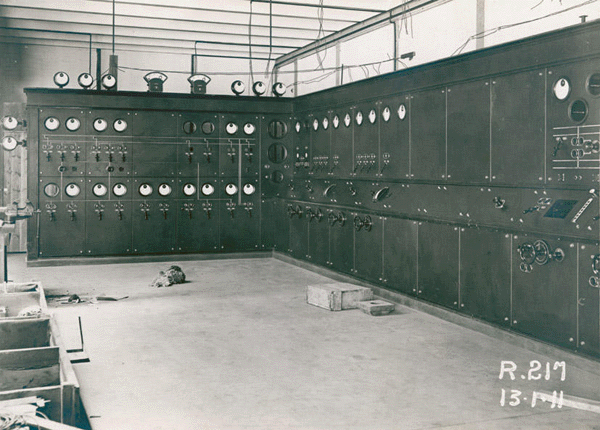
In the brochure that was given to each of the guests a outline was given of the size, output as well as about the workings of the Rosherville Power Station. This is the most complete description of the power station that the author was able to find. Here are exerpts from it:
“There are five boiler houses, each containing eight marine type water tube boilers, which supply steam at a pressure of 225 lbs. per square inch, and at a temperature of about 300 degrees Celsius to the steam turbines. The steam evaporative capacity of the boiler plant has been very considerably increased during the past few months by the addition of forced draught to the furnaces (induced draught already being in use), this having become necessary in order to steam the loads following upon the increased demand made by the mines prior to the starting up of the new power station at Witbank.
Between 1 400 and 1 500 tonnes of small duff and pea coal is burnt daily at this station alone, the load on Sunday being somewhat less. The coal is dumped from S.A.R. (South African Railways) hopper trucks on to outside bunkers, from whence it is taken by means of the mechanical conveyers to bunkers over the boilers, and distributed to the stoker hoppers by means of chutes. The coal is fired on travelling chain grates fitted under each boiler. Both induced and forced draught are used and the coal, after giving up its heat energy, is discharged as ash into cocopans and taken up to the dump. It will be seen, therefore, that the coal is mechanically handled form the time it arrives until it is dumped as ash.
The electric generators supply current at a pressure of 5 000 volts to transformers, which raise it to a pressure of 20 000 and 40 000 volts, at which pressure it is conveyed by underground cables or by overhead transmission lines to the mines.
The turbine-driven air compressors supply air at a pressure of 120 lbs. per square inch into the pipe system, from which it is fed to the mines in the Central Rand area. The air pipe system extends from Rose and Glen Deep, on the east, to the Crown Mines, on the west, a distance of about 12 miles. The total length of the compressed air pipes is about 32 miles and the maximum diameter is 27.5 inches.”
The outbreak of the Second World War did not have the same effect as the First World War on the mining sector. Although, there was a large number of personnel on active service, this was counterbalanced by the large industrial expansion caused by the need for war supplies and the end of imports.
The end of the War lead to an expansion of the mining industry and its power requirements. The Rosherville Power Station had to extend its running hours to meet the demand. The demand was so great that instead of adding onto the existing power stations the VFP built more power stations.
On the 16th of June 1948 a formal agreement was signed between ESCOM (the Electricity Supply Commission) and the VFP. The Commission had been created on the 1st of March 1923 by the government of the day to supply electricity to the country. The VFP sold of all its shares in RMPS, transferred all staff, assets, and licenses to ESCOM for the sum of £14,5 million (R29 million at the prevailing rate of exchange). This was the biggest transaction in the history of South Africa up to that time. The Chairman of ESCOM at the time was Dr Hendrik van der Bijl. Dr Bernard Price was the Resident Director of VFP in South Africa and Thomas Otley was the General Manager. Rosherville now belonged to ESCOM. The area that ESCOM had just gained became known as the Greater Rand Undertaking. The name would change twice, and eventually be called the Rand and Orange Free State Undertaking.
THE END
At 10 a.m. on the 27th of July 1966, two men one of them 75 years old, Mr L.P le Roux, and the other 82,Mr A.S. Roberts, assisted by two others closed the last steam-valve feeding the last generator in the Rosherville Power Station. At the closing ceremony, there was a group of senior officials from head office and the generating staff of the station. This was the end of an “honourable career” of 55 years where it supplied 6 520 million electric units and 6 014 million compressed air units. The original electric generators were still in use at the end, which lead one of the men at the closing ceremony to remark affectionately that, “they don’t make machines like these anymore” .
When Rosherville closed most of the workers remained loyal to Eskom and went to work in other power stations.
Rosherville was closed down because of the construction of the national grid that supplied the whole of South Africa from the large power stations found in the Eastern Transvaal: Hendrina, Camden, and Komati Power Stations. These were a lot cheaper to run than the smaller power stations, like Rosherville. The Chairman of ESCOM at the time was Mr J.T Hattingh.
With the closing down of the power station, its grounds and buildings have had to give way to the expanding needs of the former Central Maintenance groups, which later became known as Rotek Engineering when it was privatised in 1988. Now only a small portion of the original power station still stands and it looks as if it is propping up one side of the Rotran (Rosherville Vehicle Services) warehouse.
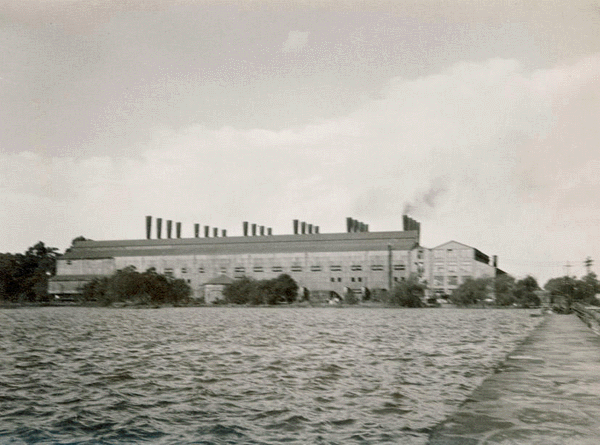
HOUSING AND RECREATION
There were two clearly defined housing quarters at Rosherville. The one was a series of houses built for the white workers and the other were compounds for the black workers.
A Germiston contractor built the white’s housing. Construction started in 1908 and was completed in 1910. It cost RMPS £600 for a pair of houses. There were 42 houses and 40 single quarters. At first, the houses were offered rent free to attract employees, who were mostly from the southern suburbs of Johannesburg. By 1925, rent was being charged, with the houses being rented at between £4 10s and £5 per month, and the single quarters at between £1 and £1 5s per month. These were provided with light, coal, water, and sanitary services free of charge.
The black worker compounds were well kept. They were segregated into the various tribal groups. Compound managers ran them, who did not report to the management of the power station, instead they reported to the head office of the VFP. There were separate quarters for the indunas (tribal leaders) and their wives and children.
The VFP and RMPS provided tennis courts, bowling greens, a large sports ground, cricket and football grounds, shooting ranges, pavilions, recreation halls, and billiard rooms. These were only for the white workers at the Station. All of these facilities played an important role in the everyday life of the power station.
THE WORKFORCE
As already mentioned, both white and black people worked at Rosherville, there were clear divisions between the two as well as divisions within the race groups. In 1925, there were 250 whites and 450 blacks working at Rosherville.
The majority of the white people at Rosherville were English speaking and a definite class hierarchy developed. At the top of the hierarchy were the engineers, there were only a few of them, and were mostly from northern England and Scotland. They were extremely loyal to VFP. If there was ever trouble at the station involving the other white workers, they could short-circuit the white artisans and operators and keep the station running with the help of unskilled black labour. They were the only employees that benefited from the pension scheme when it was set up in 1925. This would however change with ESCOM buying RMPS from VFP. The middle class was made up of mostly locally skilled supervisors, clerks, and artisans. At the bottom of the hierarchy were the black workers, who were unskilled. They did jobs like removing ashes, off loading and handling coal.
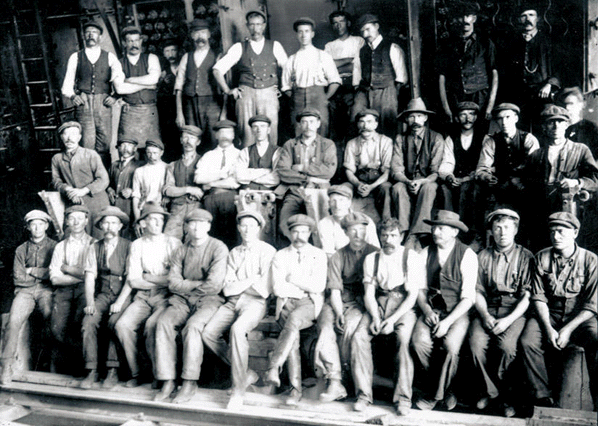
Most of the black workers were migrant labourers from all over southern Africa. They were recruited by the VFP and RMPS recruitment agency. There were Xhosa’s, Zulu’s, Tsongaan’s and Sotho’s from South Africa and then there were migrant
labourers from the neighbouring countries of Mozambique, Rhodesia (Zimbabwe) and Nyasaland (Malawi). There was a hierarchy amongst the tribes with the Zulu’s at the top. They were the guardsmen at the power station.
No women ever worked at the power station, all the work was done by men. This included secretarial and receptionist work.
LIFE AT ROSHERVILLE
In an interview, Mr Jack Andrews, a long time employee of first VFP and then ESCOM, remembers life at Rosherville. He started work at the Rosherville compound in 1939 at the age of 16 as an office boy. He would work there for a year. His father was also employed at Rosherville as an electrician. Jack Andrews would become an apprentice at the Workshop at the age of seventeen. Mr Archie Webster was the Compound Manager at the time.
Jack remembers his interview to become an apprentice. It involved Colonel Rendell, Mr Redman, and Mr Arthur Fenwick. Arthur Fenwick’s son, Bob, would become the Maintenance Superintendent of VFP and later would be a member of a group of men that would “spearhead the technological revolution that was to propel ESCOM into the ranks of the top utilities in the world.”
Life at Rosherville, according to Mr Andrews was a “wonderful” experience with an amazing feeling of camaraderie amongst all that worked there. There was a sense of loyalty to VFP amongst the employees; this was the case although they were paid less than people working at the mines. This loyalty was gained because VFP was a caring company that provided well for its employees; this included as already mentioned a recreation club as well as sporting facilities, which Mr Andrews saw as “cementing activities”. Mr Andrews would often be sent to do work on the sporting fields or at the club during normal work hours, which emphasised the importance these actually played in the day to day life of the power station and the central workshop. When any of these “activities” took place they were well supported by the people. Class structures that were mentioned earlier did not exist on the sporting field or at the recreation club where the people mixed freely with one another.
Something that Mr Andrews will never forget is Armistice Day, which was instituted in memory for all those who had died during the First World War. Workers were allowed to take time off work and go to the Cenotaph, which was built in memory of those people of VFP who had died during the War. Dr Bernard Price, the Resident Director of VFP in South Africa, would at some time during the day arrive at the Cenotaph along with Thomas Otley, the General Manager of VFP, and the rector of the Malvern Parish. Dr Price would then hold a prayer meeting and read a lesson for all those assembled around the Cenotaph. Again, this was an example of the caring nature of the VFP and was another “cementing activity.”
These memories emphasise the loyalty of the employees to Rosherville as well as to VFP; this loyalty to the Company would be carried across to ESCOM. This loyalty can also be seen in the number of fathers and their sons that worked in these companies, and the number of years people worked for these companies, Mr Andrews worked for VFP and then ESCOM for 44 years. It was upon a bedrock of this loyalty that VFP and then ESCOM became great.
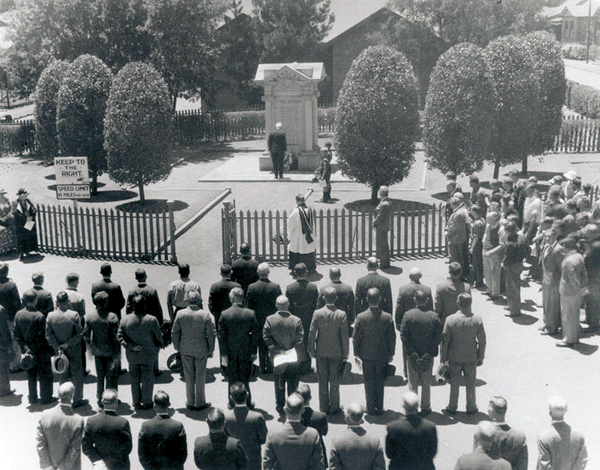
APPENDIX
Mr. Jack Andrews started work at Simmerpan Power Station, aged 15 years 9 months as a telephone boy. He served his apprenticeship at Rosherville. During the Second World War, he worked on the Simonstown dockyards. He returned to Simmerpan after the War. He worked at Vierfontein as a Shift Engineer, and was promoted to Assistant Resident Engineer (Electrical). He was then transferred to Taaibos as Assistant Resident Engineer (Electrical). From there he was transferred to Klip Power Station and promoted to Senior Assistant Resident Engineer. He then worked at the Operator Training Department at Klip. He would move from there to work at the Central Generating Undertaking in Johannesburg as the Senior Accident Prevention Officer in charge of all the power stations in the Republic. The CGU moved to Megawatt Park where he retained the position. He then was made part of the Emergency Preparedness Secretariate. He would hold this position until his retirement in 1982, after 44 years of service.
BIBLIOGRAPHY
Anon.: Photograph at Heritage Conference Centre, Rosherville.
Anon.: Rosherville Power Station Closed Down After 55 years of Service, Megawatt, 1966-67.
Anon.: Souvenir of the visit to Rosherville Generating Station by the members of the Senate and House of assembly of the Union of South Africa, 1925.
Anon.: What Electric Power Means to Reef, Rand Daily Mail, 21 September 1925.
Conradie, S.R. & L.J.M. Messerschmidt.: A Symphony of Power. Chris van Rensburg Publications (Pty) Limited, Johannesburg, 2000.
Anon.: Electricity Supply Commission, twenty-eight Annual Report, 1950-51.
Rendell, E.F.: Story of Rand’s Power Industry. The South African Electrical Review, April 1956.
Slater, A.: The Birth and Adolescence of the VFP. Megawatt, 1966-67.
